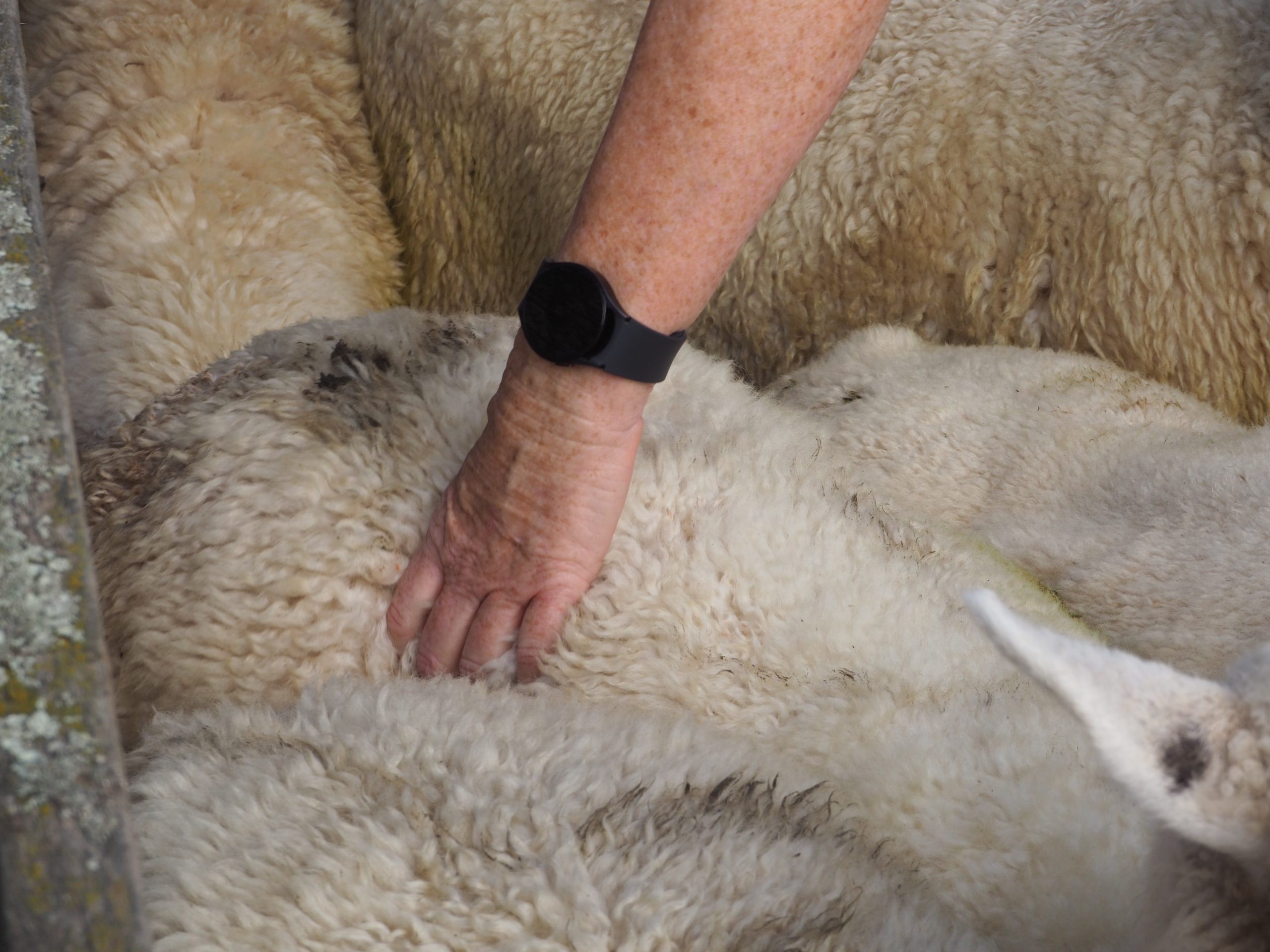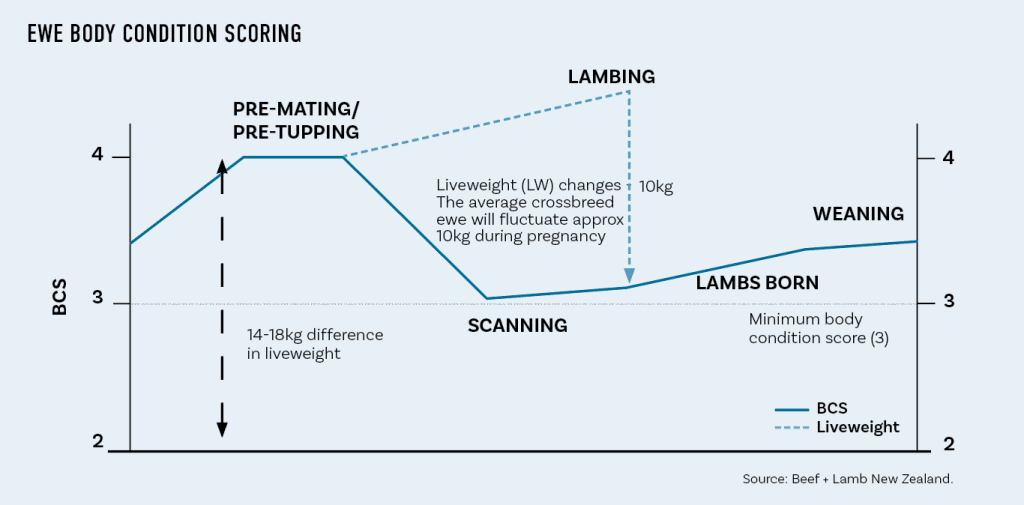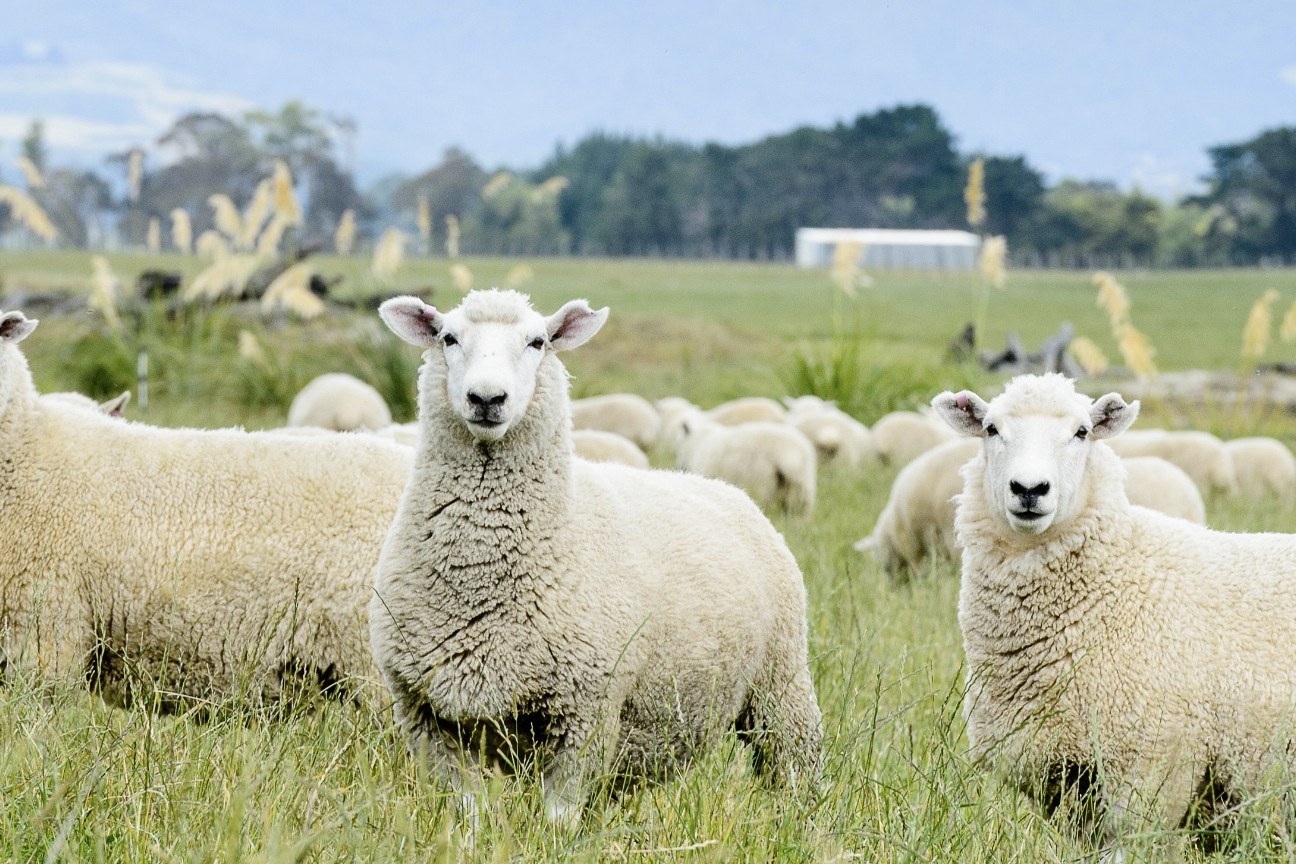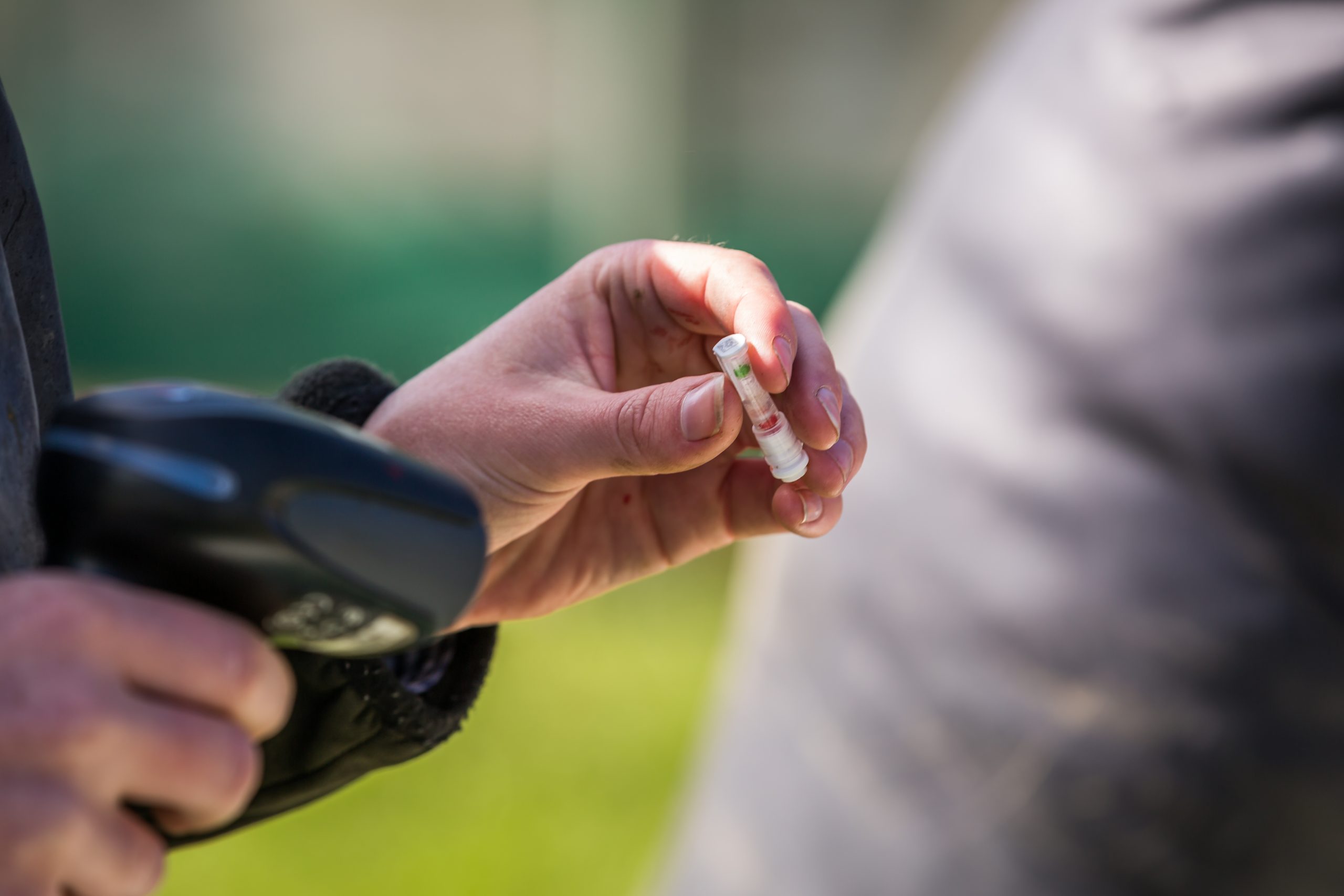Body condition scoring drives performance
Are you trying to maximise the kilograms of lamb weaned per hectare? Sheep performance has been identified as a key driver of top-performing farm businesses. Words Sandra Taylor

Body condition scoring is a powerful tool to help sheep farmers increase ewe productivity, lamb survival and pre-weaning growth rates and make the most effective and efficient use of feed resources.
It is an assessment of the amount of body fat or condition on an animal, and in sheep, it is measured by feeling the spine and horizontal processes along the loin area. Sheep are then assigned a score between 1 and 5, with 1 being very skinny and 5 being really fat.
From a productivity point of view, the optimum body condition score (BCS) for a ewe is 3 and ideally, a ewe flock should be at a BCS of 3 or above all year round.
“The biggest jump in scanning percentage will come from reducing the number of poor condition ewes at mating.” – Paul Kenyon, Professor Massey University
Dan Brier, Beef + Lamb New Zealand’s General Manager of Farming Excellence says sheep performance has been identified as a key driver of top-performing farm businesses and the drivers of profit in sheep flocks are the kilograms of lamb weaned per hectare, the weaning weight per lamb and the number of lambs weaned per hectare.
Body condition scoring influences all three.
He says the single most important factor influencing the profitability of a ewe flock is the number of ewes that have a BCS below 3 at mating and lambing.
“It’s about minimising the number of tail-end ewes as these will be the ones that bring down the overall performance of your ewe flock,” says Dan.
He says the three most important times to BCS ewes are at weaning, pre-mating and at scanning.
Weaning
Body condition scoring ewes at weaning will allow farmers to identify poorer condition ewes (those with a BCS of under 3) and either preferentially feed them to allow them to gain condition before mating in autumn, or cull them.
“It means farmers are not wasting valuable feed on ewes that can just be maintained over summer and the extra feed can be partitioned into growing lambs or putting condition on lighter ewes, which in turn increases their productivity.”
Pre-mating
According to Massey University’s Professor Paul Kenyon, the biggest jump in scanning percentage will come from reducing the number of poor condition ewes at mating.
Body condition scoring ewes six weeks out from mating will help farmers identify the ewes with a BCS of below 3 so that they can be preferentially fed in the lead-up to mating – or culled.
It also gives farmers the option to mate their lower condition score ewes to a terminal sire.
Ewes in good condition (at a BCS of 3 and above) can be maintained in the lead-up to mating.
Scanning
Body condition scoring ewes as they are pushed into the scanning crate gives farmers the opportunity to adjust feeding levels based on both pregnancy status and BCS.
Brier says scanning is typically done at a critical stage of the production cycle when farmers have around five weeks to put condition on ewes that have a BCS of below 3.
BCS is strongly correlated with lamb survival, ewes’ mothering ability, lactation and pre-weaning growth rates.
Ewes with a BCS of below 3 can be drafted off and preferentially fed. This is especially important for multiple-bearing ewes.
“Feed supplies are typically tight going into lambing, so using scanning data in conjunction with BCS gives farmers the ability to partition feed into the ewes that need it most, which will be lighter condition, early lambing, multiple-bearing ewes.”
B+LNZ has a number of Body Condition Scoring resources on its Knowledge Hub. beeflambnz.com/knowledge-hub





